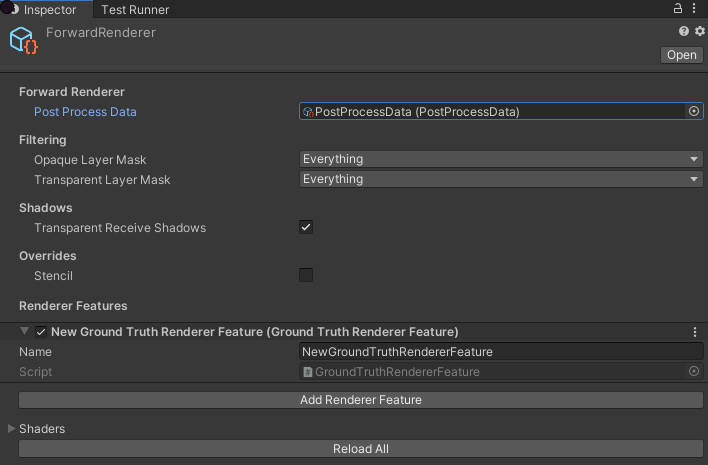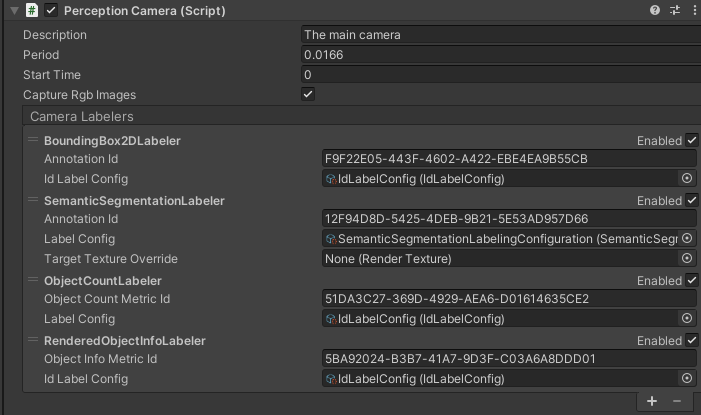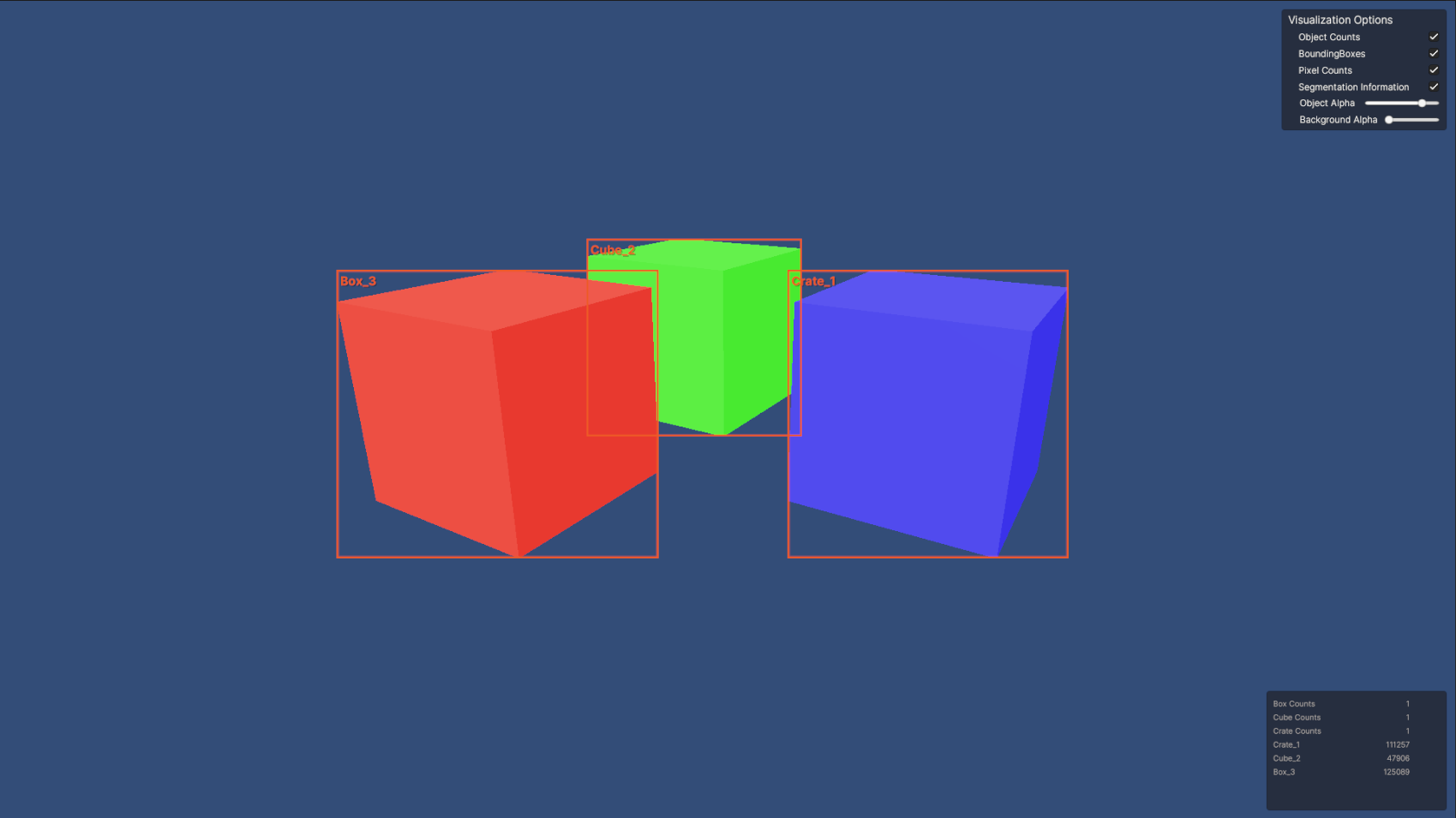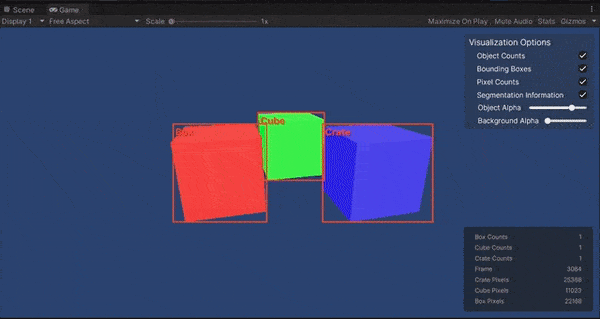Getting Started with Perception
This walkthrough will provide creating a new scene for generating perception datasets including segmentation data and image captures.
Step 1: Create a project and install Perception
First, follow this guide to install Perception in your project.
Step 2 (for Universal Render Pipeline projects): Add GroundTruthRendererFeature
This step can be skipped for HDRP projects.
- Select your project's
ScriptableRendererasset and open the inspector window. In most projects it is located atAssets/Settings/ForwardRenderer.asset. - Click
Add Renderer Featureand selectGround Truth Renderer Feature

Step 3: Create a new scene and camera
- Create a new scene using File -> New Scene
ctrl+sto save the scene and give it a name- Select the Main Camera and reset the Position transform to 0
- In the Hierarchy window select the main camera
- In the inspector panel of the main camera select Add Component
- Add a Perception Camera component

Step 4: Create labeled objects
- Create a cube by right-clicking in the Hierarchy window, select 3D Object -> Cube
- Create 2 more cubes this way
- Change the names of the cubes to Cube, Box, and Crate
- Position the Cubes in front of the main Camera
- On each cube, from the inspector panel add a Labeling component
- Click the +
- In the text field add the name of the object i.e Crate. This will be the label used in the semantic segmentation images
- In the Project panel right click -> Perception -> Labeling Configuration
- Select the new ID Label Config
- Click the +
- In the label text field add the same text that the Label script contains on the objects created in the scene (i.e Cube, Box, Crate)
- Select the Main Camera in the Hierarchy panel
- In the Perception Camera attach the ID Label Config created in previous step for each ID Label config
Step 5: Run simulation and generate dataset
- Press play in the editor, allow the scene to run for a few seconds, and then exit playmode
- In the console log you will see a Shutdown in Progress message that will show a file path to the location of the generated dataset.
Example file path on a Windows PC :
C:/Users/<User Name>/AppData/LocalLow/DefaultCompany/UnityTestFramework\2e10ec21-9d97-4cee-b5a2-7e95e299afa4\RGB18f61842-ef8d-4b31-acb5-cb1da36fb7b1
- In the dataset folder you will find the following data:
- RGB captures
- Semantic segmentation images
- Logs
- JSON dataset

RGB image

Example semantic segmentation image
Optional Step: Realtime visualization of labelers
The perception package now comes with the ability to show realtime results of the labeler in the scene. To enable this capability:

Example of perception running with show visualizations on
- To use the visualizer, verify that Show Visualizations is checked on in the Inspector pane. This turns on the built in labelers which includes segmentation data, 2D bounding boxes, pixel and object counts.
- Turning on the visualizer creates new UI controls in the editor's game view. These controls allow you to atomically control each of the individual visualizers. Each individual can be turned on/off on their own. Some visualizers also include controls to change their output.

Visualization controls in action
Important Note: The perception package takes advantage of asynchronous processing to ensure reasonable frame rates of a scene. A side effect of realtime visualization is that the labelers have to be applied to the capture in its actual frame, which will potentially adversely affect the scene's framerate.